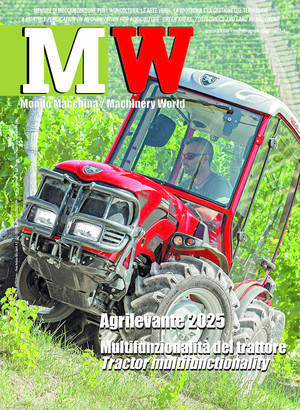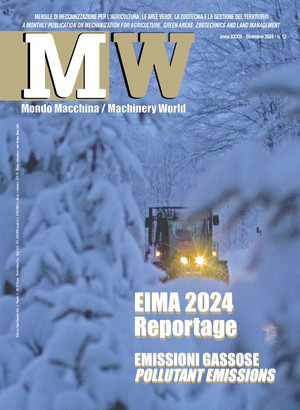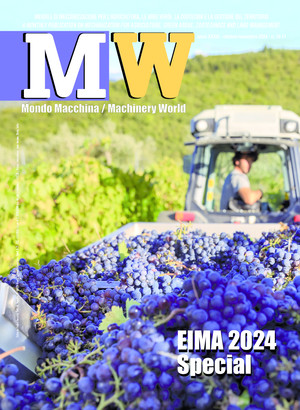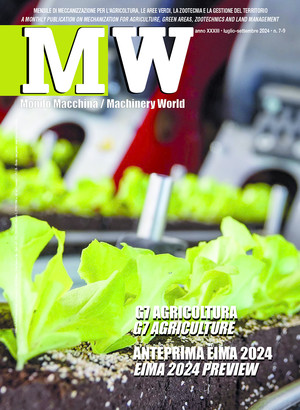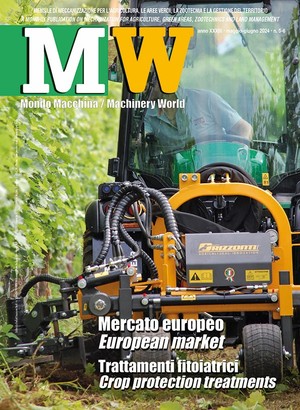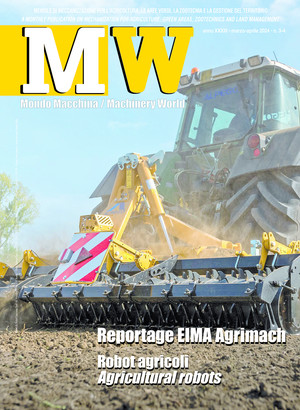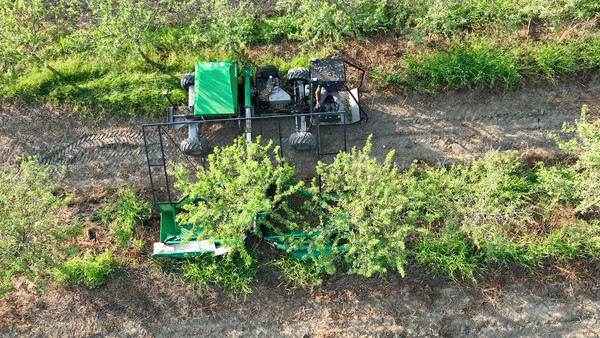
From the field to the table, the harvesting of nuts
Italy is an important producer of nuts, ranging from Piedmontese hazelnuts to Sicilian almonds. This is a production of excellence that enhances local resources while responding to the growing demand for sustainable, high-quality products
Thanks to the specific nature of its territory, Italy is among the top 10 countries in the world for the production of nuts -- reached 270,000 tons in 2023 -- represented mainly by hazelnuts, almonds, walnuts, chestnuts and pistachios. Although consumption is on the rise, the same cannot be said for production, which declined significantly last year due to unfavorable weather conditions. Hence, to make up for the shortfall in a growing demand driven by healthier lifestyles and a gradual seasonal adjustment of nut purchases, in 2023, the market had to resort to foreign imports, which increased by as much as 50 percent.
Walnuts
Walnut (Juglans regia) cultivation requires specific environmental conditions and careful agronomic management in order to maximize yield and product quality. It is a perennial tree crop that is well adapted to temperate climates with moderate winters and cool springs. Walnut grows best on well-drained soils rich in organic matter that also ensure adequate water supply during the warmer months. Planting is typically done in the fall or winter, with large planting sizes to allow proper crown development. Although this plant can reach up to 20-30 m in height, in intensive planting, tree growth is contained to a few meters, thanks in part to careful irrigation and recurrent pruning. The most productive cultivars are those resistant to some bacterial diseases. Harvesting can be carried out with the help of facilitators (e.g., by hand shakers) or mechanically, where cleaning of the harvesting area, fruit detachment and mechanical fruit picking are carried out - in order.
Following harvesting, the nuts undergo a process of sorting, cleaning, possible bleaching, drying and/or shelling to prepare the product for marketing or transfer to the food industry.
Hazelnuts
Hazelnut (Corylus avellana) cultivation requires careful agronomic management and favorable environmental conditions, making this crop thrive best in temperate climates. Italy is still one of the world's leading producers, with significant hazelnut extensions in Piedmont, Lazio, Campania and Sicily. Plants, often contained to 2-3 m in height for ease of management, are planted in autumn or late winter, with an inplant geometry that favors the best sun exposure and reduced moisture within the canopy. Growth is fast, which requires annual pruning to maintain row shape and order, along with appropriate phytosanitary treatments to combat pests such as oziorhynchus and bugs. Harvesting, mostly mechanical, takes place in late summer when the ripe hazelnuts fall to the ground. Shakers and rotary brush or vacuum systems facilitate the process, but for greater harvesting efficiency, they must operate on surfaces free of debris and stones. After harvesting, the hazelnuts are dried, then graded, shelled and carefully sorted to meet the rigorous standards of the confectionery industry, which is the main target market.
Almonds
The almond tree (Prunus dulcis) is a crop well adapted to the Mediterranean climate, characterized by hot, dry summers and mild winters, such as those in southern Italy and the islands. It prefers well-drained soils rich in organic matter and suffers from waterlogging, which can damage roots and promote fungal attacks. Planting is usually in the fall or early spring, with rather wide establishment distances. In intensive cultivation, self-fertilizing varieties are favored, thus reducing the need for pollinators and improving overall yield.
Almonds are harvested in late summer, between August and September, when the hulls surrounding them open naturally. In modern almond groves, mechanical shakers promote fruit drop, followed by mechanical harvesting, which removes the almonds from the ground and separates them from impurities.
After harvesting, the almonds are dried to prevent microbial growth and preserve organoleptic properties. Finally, the product undergoes hull removal and is sorted and graded according to quality.
Pistachio
Pistachio (Pistacia vera) cultivation requires soil and climatic conditions similar to those of the almond tree, preferring warm, dry climates with cold, but not too harsh, winters to promote flowering. Native to Mediterranean regions, pistachios are usually planted in the fall or early spring, with an arrangement designed to maximize light and promote air circulation. Most varieties are self-incompatible, requiring different cultivars to ensure proper pollination. Harvesting is done in the fall, between September and October, when the fruits are ripe and the husk opens. In modern cultivations, mechanical shakers are used to cause the fruits to fall, which are then intercepted, removing residues and impurities. Again, there is drying, followed by sorting and packing, which are steps that are essential to maintaining high-quality standards.
Chestnuts
Chestnut (Castanea sativa) cultivation is similar to that of other nuts, requiring temperate climates and well-drained soils that are rich in organic matter and have good water retention. Chestnut trees tolerate low temperatures but are sensitive to severe cold and late frosts, which can damage production.
Plants are usually planted in the fall or spring, and careful planting is always done to promote air circulation and exposure to light. Chestnut harvesting takes place in autumn, between September and November when the husks open and the fruit falls to the ground.
In modern chestnut groves, mechanized harvesting with shakers and harvesters is now common practice, with a significant improvement in efficiency over manual harvesting. Sorting is aimed at removing impurities and low-quality fruit. Chestnuts can be sold fresh or processed into flour or candied chestnuts, preparations in high demand in the food and confectionery industry.
Machinery for picking nuts
In most cases, the picking of nuts is done from the ground; therefore, it is important to carefully remove any pruning residues and inert material from the area below the trees in advance so as to facilitate the interception and conveyance of the nuts.
Fruit detachment usually occurs by shaking of the trunk and/or main branches, on which relatively high-frequency vibrations are imposed.
Shaking machines can be trailed, tractor-coupled, or self-propelled. Towed models are more suitable for operation in wide planting sizes with adequate maneuvering space, while self-propelled models are able to move nimbly even in narrow planting sizes, particularly on rough and sloping terrain.
In addition to directly touching the trunk, a mechanical arm can transmit the shaking to higher branches, so even plants of different sizes can be effectively intervened in the same plot.
Ground interception modes
Picking up the product from the ground can be done by means of counter-rotating brushes or by means of vacuum cleaners. In the former case, the machine is equipped at the front with two sturdy counter-rotating circular brushes made of plastic material, which concentrically convey the product to a mechanical collector.
In some cases, rubber paddles are used to convey the material to a conveyor belt, where the separation of foreign material is performed. More specifically, an auger works to remove small clods of soil, while some fans drive away lighter debris, such as leaves and other plant material.
Finally, the fruits pass through a set of sieves of different calibers to remove the additional inert material. Alternatively, a hose suction apparatus, easily oriented by hand by the operators in tow, can be installed to collect the previously arranged produce into piles or windrows.
The suctioned material is sent to a vacuum chamber, where separation of the heavier components takes place, and is then lapped by a fan-generated air stream to remove light impurities.
Before unloading into bags or towed trolleys, the product passes through rotating screens for a final selection of foreign material; this allows further selection, dividing the product from aggregates according to size differences.
Fans for windrowing
Both towed or self-propelled groundnut harvesters are usually equipped with powerful fans to create windrows or heaps. The fans are usually driven through the tractor's power take-off; the supply airflow is conveyed through flexible hoses, which can also be manually directed by the operators, if necessary, to move the scattered produce on the ground conveniently.
Harvester system
Nuts, almonds, pistachios and chestnuts are fruits that can be harvested in one go, i.e., by a combination of shaking and ground interception. For this purpose, these models are equipped with either a mechanical arm that bruises the trunk or branches of the plant or with an integrated harvesting system (represented by rotating brushes, vacuums or conveyor belts) that conveys the fruits, separating them from any impurities. Other models are equipped with integrated inverted umbrellas or nets that, wrapped around the trunk and of a diameter consonant with that of the canopy, intercept the fruit in the fall before it touches the ground. This greatly facilitates the conveying phase into the accumulation hopper, and at the same time, much less dust is generated than when brushing or suctioning the ground.


